iPhone Data Recovery
 Phone to Phone Transfer
Phone to Phone Transfer
The easy 1-Click phone to phone data transfer to move data between iOS/Android/WinPhone/Symbian
Restore-iPhone-Data Products Center

 Android Data Recovery
Android Data Recovery
The Easiest Android data recovery software to recover Android lost or deleted Files
 Phone Manager(TunesGo)
Phone Manager(TunesGo)
Best iOS/Android phone manager tool to manage your phone’s files in a comfortable place
 Phone to Phone Transfer
Phone to Phone Transfer
The easy 1-Click phone to phone data transfer to move data between iOS/Android/WinPhone/Symbian

iOS Toolkit
A full solution to recover, transfer, backup restore, erase data on iOS devices, as well as repair iOS system and unlock iPhone/iPad.

Android Toolkit
All-in-one Android Toolkit to recover, transfer, switch, backup restore, erase data on Android devices, as well as remove lock screen and root Android devices,especially Samsung phone.
[Summary]: Learn What are Apple iOS 13 new features and how you can install the iOS 13 developer beta on your iPhone XS, iPhone XR, iPhone XS Max, iPhone X, iPhone 8/Plus, iPhone 7/Plus, iPhone 6s/Plus and iPads by following these steps.

Apple just released iOS 13 beta for developers, along with other new betas of watchOS 6, tvOS 13, iPad OS and macOS Catalina. The new version, iOS 13, will include big additions—like the ability to sign in to websites using Face ID—and small ones—like a nice-looking Dark Mode. Here’s a round-up of all the major changes on iOS 13.

Dark mode: It’s completely black and supports all of Apple’s first-party applications. Even notifications and the dock get these new dark colours.
Find My: Apple merged its Find My Friends and Find My iPhone apps into an app called Find My. All Apple tracking tools are concentrated in one place, so you can use the same interface to find lost devices and favorite devices. The new app can also find offline devices – by sending a secure Bluetooth beacon to other Apple devices and then forwarding it back to Apple and you.
Swiping keyboard: Apple is updating its default keyboard, and its new sliding features are reminiscent of SwiftKey, Swype, Gboard and more. Apple calls it the “Quick Path” keyboard.
Reminders: Apple added new Today, Scheduled, Flagged and All filtering options. It also integrates AI intelligence into the application. You can type, and when you want to remind, the reminder will be displayed automatically. You can also tag your contacts and alert you when you open the “message” topic.
Apple Maps: The new map looks more like 3D and loads detailed map data that makes the service comparable to Google Street View. Apple said it used thousands of LIDAR-equipped cars to collect the data.
Privacy: Apple is re-adjusting some of the content in iOS 13 to focus more on privacy. For example, you’ll be able to choose to give your location data to an app “just once”. You will be able to log into Face ID and create a new account for a service “without revealing any personal information”.
Messages: The message is getting the profile picture and display name so you can easily share your photo and name with other users. You can even use Memoji as a profile picture. When it comes to Memoji, Apple has added more personalization options. You can also use them as stickers, similar to how Bitmoji works. These will apply to applications such as Mail and even third-party applications.
Photos: Apple has created a new photo and video interface so you can easily edit brightness, highlights, shadows, contrast, saturation, white balance, sharpness, sharpness, vignette and noise reduction.
Cycle tracking: Both iOS 13 and WatchOS 6 add the ability to track menstrual cycles, which is perfect for female Apple Watch users.
Other improvements: Apple has updated many apps in iOS 13. For example, Apple Mail is formatting the desktop, while Safari is getting the preferences for each site, and Notes is getting a new gallery view. Apple is also improving iOS 13, so things like Face ID can be quickly unlocked by 30%, and apps can be up to twice as fast in iOS 13.
An iOS13-compatible device — That’s an iPhone 6S or newer, the latest iPod Touch, any iPad Pro, iPad gen 5 or 6, iPad Air gen 2 or 3, or iPad Mini gen 4.
A Mac computer running the latest version of MacOS (Mojave).
A Lightning-to-USB cable. (Or USB-C, depending on what Mac you have).
iTunes, updated to the latest version.
An Apple Developer License (or a credit card and $99).
iTunes is the most commonly used backup feature because it can back up almost everything on the device. However, restoring from iTunes backup will overwrite all data on the device. iCloud backup is very simple but iCloud does not back up everything on the iPhone / iPad. If you are looking for an alternative to them, iOS Data Bakcup & Restore program in your best choice. Yes – iOS Data Backup & Restore, a very handy tool designed to easily back up your iPhone / iPad before upgrading to iOS 13. Moreover, it supports backing up 18 different types of files, and you can restore data from backup at any time. More importantly, it not only restores data from iPhone backup, but also restores iOS devices from iTunes / iCloud backup.
Key Features:
Flexibly & safely backup data on iPhones, iPads and iPods.
Export any items from backup file to PC/Mac as HTML, CSV or vCard files.
Selectively Restore Backups to iPhone or iPad.
Supported data types: Contacts, Messages, Call History, WhatsApp, WeChat, Viber, Kik, Skype, Line, Photos, Videos, Notes, Voice Memos, Safari Bookmarks/History, Calendar, Reminders, etc.
Supported devices: iPhone XS/XS Max/XR, iPhone X, iPhone 8/7/6s/6 Plus, iPad Pro, iPad Air, iPad mini, iPod touch 6/5 etc. running on all iOS versions even the newest iOS 13.
A read-only program that won’t harm your iOS device or computer.
Install and launch iOS Data Backup & Restore software on your computer. Choose “iOS Data Backup & Restore” to enter the main interface.

Click the button of “iOS Data Backup“, and connect your iPhone or iPad device with computer.
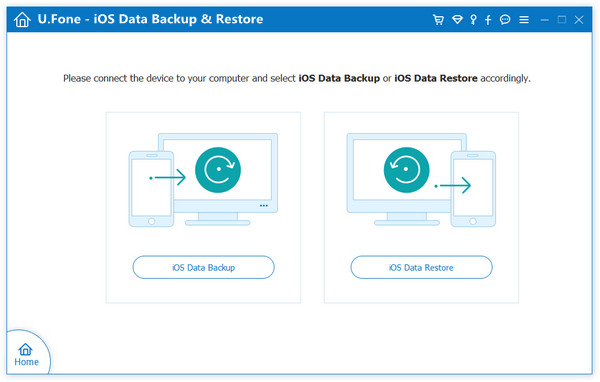
Next, two backup options are provided, “Standard backup” as well as “Encrypted backup“.
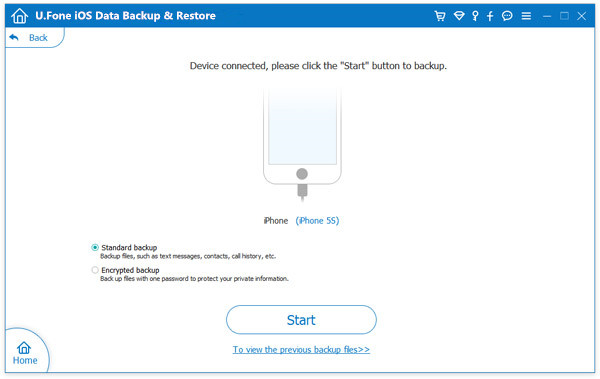
Note: For “Encrypted backup”, you’ll first set a password for your backup.
Here you can choose the data type for backup. This program enables you to back up contacts, messages, call history, photos, notes and so on.
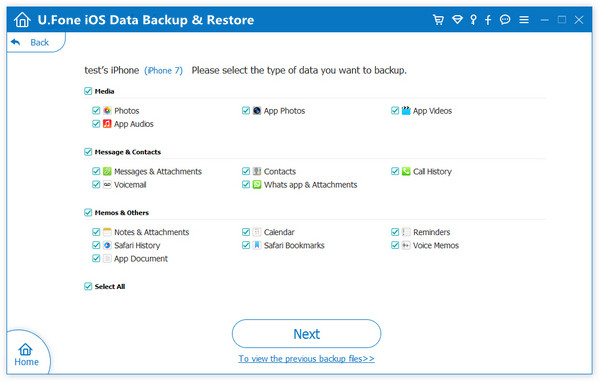
Now then the program will back up the selected data from your iOS device immediately.
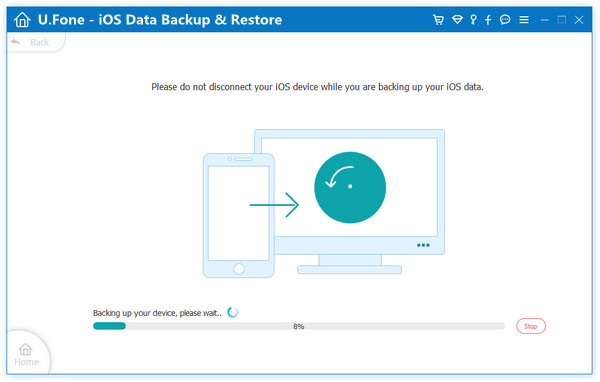
After backing up, you can learn the backup information clearly, including the backup size and path.

Here are the specific steps to install iOS 13 with iTunes. Please follow us.
Step 1. Firstly, download Xcode 11 beta on your computer.
Step 2. Click one of the links below to download iOS 13 beta for your iPhone, iPad or iPod touch model. iOS 13 for iPad is now called iPadOS.
iPhone XS Max, iPhone XS
iPhone XR
iPhone X
iPhone 8, iPhone 7
iPhone 8 Plus, iPhone 7 Plus
iPhone SE
iPhone 6s
iPhone 6s Plus
iPod touch (7th generation)
iPad Pro (11 inch), iPad Pro (12.9-inch)(3rd generation)
iPad Pro (10.5 inch), iPad Pro (12.9-inch)(2nd generation)
iPad (5th generation), iPad (6th generation)
iPad mini (5th generation), iPad Air (3rd generation)
iPad mini 4, iPad Air
iPad Pro (9.7 inch)
iPad Pro (12.9 inch)
Step 3. Connect your iPhone, iPad or iPod touch to your computer and launch iTunes. Select your device icon to access your iPhone. You may need to enter your passcode on your iOS device to allow device access.
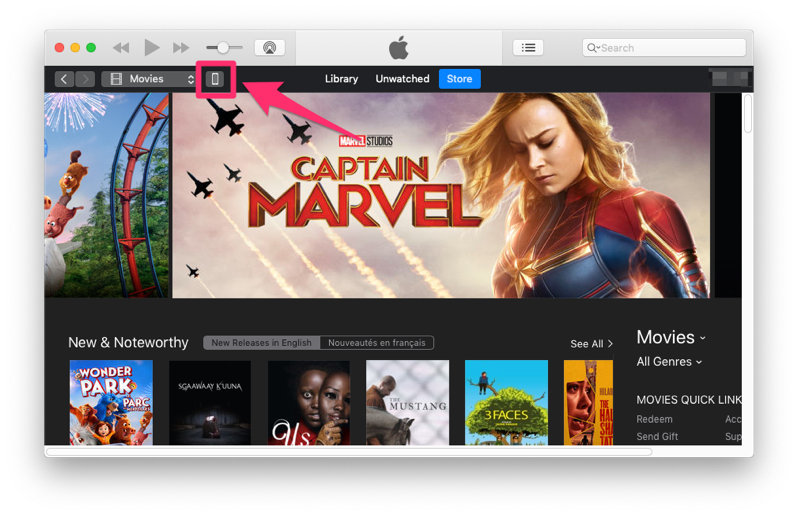
Step 4. Hold down the SHIFT [ Windows ] or ALT [ Mac ] key and click the “Update” button. Then select the location of the iOS 13 beta 1 IPSW file you saved in step 2 and select ‘Open’.
Step 5. iTunes will start to restore your iPhone / iPad / iPod touch and install iOS 13 beta 1 / iPadOS beta. Your device will eventually restart and will install iOS 13 Beta 1. Note that after installation you can choose to restore your device from iTunes or iCloud. Of course, it is best to use the iOS Data Backup & Restore tool to retrieve your iOS backup without data loss.
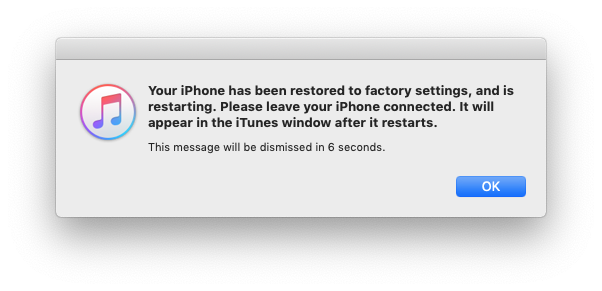
Now you can use iOS System Recovery to install iOS13 IPSW file without iTunes and fix your iOS system to normal without data loss. In fact, iOS System Recovery can be used to upgrade iPhone/iPad to iOS 13 and downgrade iOS 13 to iOS 12.3/12.2/12 as well. Besides, the software is expert at fixing your iOS device when your iPhone gets stuck in Recovery mode/DFU mode, Apple logo screen, frozen status, black or white screen of death, and so on.
Key Features:
Fix iOS devices to normal state without any data loss.
Safely fix all iOS errors such as DFU mode, recovery mode, Apple logo, White Screen of Death, Black Screen of Death, headphone mode, etc.
Support all iOS devices including iPhones, iPads and iPods, running on the latest iOS 13.
Recover iPhone data and also backup & restore iPhone.
Firstly, download, install and launch the iOS System Recovery software on your Windows and Mac PC. Then make a connection between your iPhone and PC with a USB cable. Select a feature of “iOS System Recovery” from the first page.

When the program recognized your device, a window as follows will appear. Tap on “Start” button to begin the process.

If your device is in a normal state:
Your iPhone/iPad works and wants to install iOS 13 iPSW file without data loss: Connect iPhone to the computer and it can be detected by the program. If the device is not abnormal, a reminder “Device is connected but not recognized” will appear on the screen. Next, the iOS System Recovery software will guide you to put iPhone into DFU mode/Recovery mode in order to install iOS 13firmware.
Follow the on-screen guide to put your iPhone into recovery mode.
On iPhone SE, iPhone 6s:
1. Turn off the iPhone.
2. Press and hold the Power button and the Home button simultaneously for 10 seconds.
3. Release the Power button and press and hold the Home button until your iPhone is in DFU mode.

On iPhone 7/7 Plus
1. Turn off your iPhone 7 device and connect it to PC.
2. Press and hold the Side and Volume Down buttons simultaneously.
3. Continue to hold the buttons until you see the “Connect to iTunes” screen.

On iPhone 8/8 Plus and iPhone X/XS/XS Max/XR:
1. Turn off the device and connect to PC.
2. Press and release the Volume Down button quickly.
3. Press and hold the Side button until the iTunes logo screen appears.
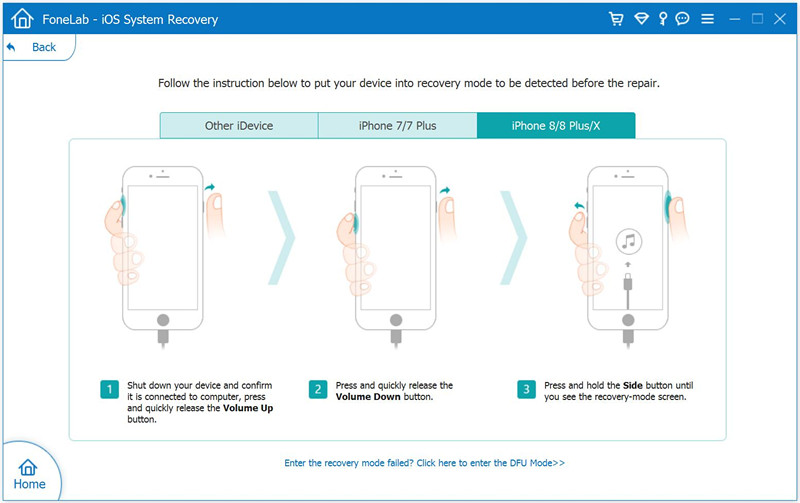
If you iPhone device is in an abnormal state:
If your iPhone is in abnormal status while installing iOS 13 iPSW file, for example, stuck at black screen, recovery mode, DFU mode, iTunes connected screen, etc., the iOS System Recovery will recognize that your device is in the abnormal status. Click “Confirm” and follow the tutorial to fix it.
The software displays information about your detected device. Select iOS 12 version after confirming device’s information if you want to install iOS 13 iPSW file on iPhone.
Select the downloaded file and the iOS System Recovery program should be install the iOS 13 iPSW file on your iPhone without losing data.

Select and add the iOS 13 iPSW file from computer to the program.

Now, the program will automatically install iOS 13 iPSW file to iPhone successfully. After that, your iPhone will boot up automatically, running on iOS 13. You can check on Settings > General > About and see if it runs on the latest iOS 13.
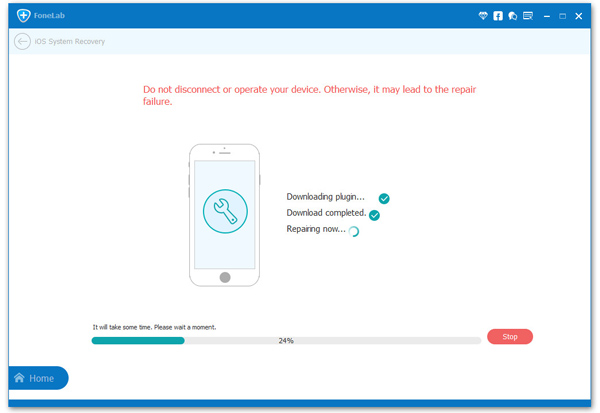
[Solved] How to Fix iOS 13 Update Bricked My iPhone/iPad
[Solved] iPhone 7 No Service After iOS 12 Update: Here’s Fix
How to Fix iPhone Stuck in Recovery Mode When Upgraded to iOS 13
How to Enter and Exit Recovery Mode on iOS 12/13 Devices
3 Ways to Install iOS 12 on iPhone iPad without Losing Data